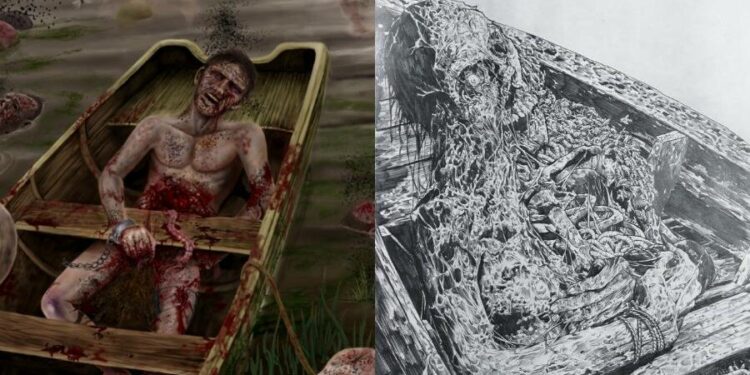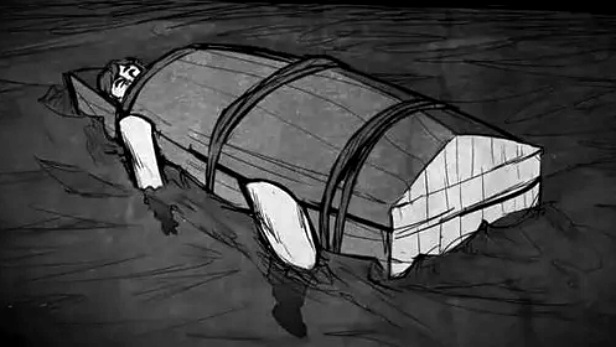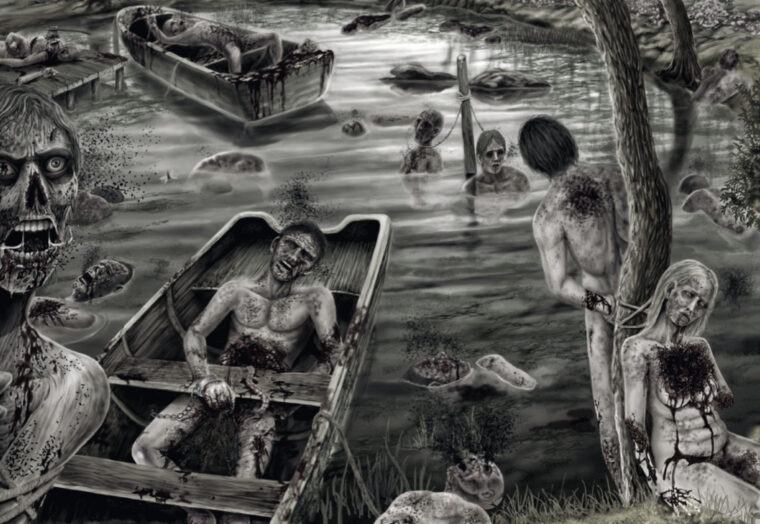Throughout human history, gruesome methods of torture and inhuman punishments have always been recognized as another aspect of endless power. From the ancient Egyptian time to the world war era, thousands of powerful rulers have shown their cruel and filthy heart by punishing people in some barbaric and gruesome ways, fulfilling their evil interest in dominance. While some did this for their own amusement!
Of all the horrible ways people would’ve been punished to die in ancient times, Scaphism was one of the worst to say. Could you imagine that the common food like mixture of milk and honey might be the cause of a lengthy and the most painful fearsome death?
During the period of 500 BC, Persian Empire started a gruesome way of execution called “Scaphism” or “The Boats” ― this brutal way of torture used to yield a lethal pain and unbearable discomforts in the victim until they would die.
Scaphism – The Most Gruesome Method Of Torture And Execution:
Scaphism is a Persian execution technique consisted of trapping the victim in the space between two small boats or two hollowed-out tree trunks. The helpless sufferer would be tied inside the space between the boats in such a way that the head, hands, and feet remained outside.
A mixture of honey and milk was force-fed to the condemned person until it led to diarrhea. After that, the victim would be forced to vomit, spreading the mixture all over their face, chest and legs. The person would then be left out in the sun or taken to a water reservoir or swamp.
Within a few hours, swarms of insects would be gathered around the them, settling in dense clouds around their face and stinging their eyes, nose, and mouth. As well as flies and rats would show up and start attacking them, eating the vomited mixture of milk and honey.
Here’s What Makes Scaphism The Most Horrific Form of Execution:
To make things worse, additional honey and milk were splashed onto the soft parts of their body, particularly the anus and genitals. Other insects would begin to bite at these soft parts, carrying with them bacteria from the feces. Predictably, these bites would get infected.
After a few days, these wounds would begin to weep pus, adding another layer of attraction to other insects, breeding maggots in their body. Those maggots would start eating the flesh, carrying more disease into the person’s body.
Scaphism comes from the Greek word “skaphe,” which literally means “hollowed out.” And that does a good job at conveying a double meaning behind the dreadful punishment. Not only were the boats themselves hollow, but so was the victim when the punishment was over.
To extend their death pain, milk, honey and the water was splashed repeatedly on the person’s body and some poured into the mouth. Hence the sufferer had little chance of dying of thirst or hunger.
If the crime was severe, the guards would continue to force-feed the milk and honey, day after day to the victim. The most important yet horrific part of Scaphism was that you were not allowed a natural death at any cost.
Death By Scaphism – The Infamous Execution Of Ancient Persian Soldier Mithridates:
The most infamous story of scaphism is the execution of Mithridates, who was a young Persian soldier in the army of king Artaxerxes II. He allegedly killed Cyrus, the younger brother of King Artaxerxes II.
In 404 BC, the Persian king Darius II died, leaving behind two sons, Artaxerxes and Cyrus. Artaxerxes was the eldest, and assumed the role of king, but Cyrus wanted the power, so he had challenged his brother Artaxerxes. In 401 BC, The war was held between the two brothers at the Battle of Cunaxa and an arrow by Mithridates accidentally hit Cyrus in the battlefield.
Artaxerxes promised to reward the soldier, but only on one condition. Everyone must think it was King Artaxerxes II who had killed Cyrus so that he could secure his power.
Later, Mithridates forgot about the historic covenant, and at a banquet, Mithridates boasted that he was the one that killed Cyrus. King Artaxerxes was informed about this and he immediately punished Mithridates by sentencing him to death by Scaphism for treachery.
Plutarch, the ancient Greek essayist, philosopher and biographer, wrote in his book “Life of Artaxerxes” that Mithridates had survived this horrible torture for 17 whole days until he finally died of severe infection.
Conclusion:
Scaphism death penalty was meant for the worst crimes such as murder and betrayal in Persia. However, many consider the practice to be a purely literary invention of the Ancient Greek literature as it has never been attested in Ancient Persia. The primary source is Plutarch’s “Life of Artaxerxes” that was written almost six centuries after the actual event occurred in Persia. Whatever its origin is, Scaphism is indeed the most horrible way to die.

























